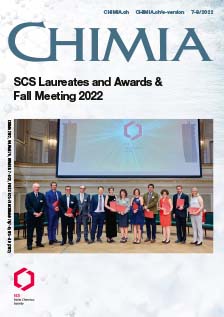Development of an Integrated Solution to Prevent Spring Frost Damage Using an Aqueous-based Insulating Foam
FH-HES Universities of Applied Sciences
DOI:
https://doi.org/10.2533/chimia.2022.709Keywords:
Aqueous gel foam, Biodegradable, Insulation, Integrated solution, Spring frostAbstract
In recent years, agricultural crops experience unusually early onset of vegetation due to global warming, which can cause major frost damage with devastating effects on crop yields. To mitigate the risk of frost damage, an integrated solution was developed, consisting of an aqueous-based biocompatible foam and a portable foam applicator enabling wine cultivators to treat up to 1000 m2 of vineyards with one filling containing 10 L of foam. The foam is biocompatible, stable for several days and easily removed by rain. Foam application yielded an insulation efficiency of up to 1.5°C during spring frost nights for the buds covered by the foam when combined with an electrically heated wire. Moreover, it was observed that the foam also created a 'mini greenhouse' effect at positive temperatures during the days, which might be a positive side effect helping the plants to grow at this early stage of the year.
Downloads
Published
Issue
Section
Categories
License
Copyright (c) 2022 Swiss Chemical Society

This work is licensed under a Creative Commons Attribution 4.0 International License.







